Snapshots of a bush doctor’s life on the edge
Kirsten Due isn’t the type of doctor to bark orders - even after 20 years as a remote area medico. But a desperate mercy dash across the desert to save the life of a two-year-old boy brought her to the brink.
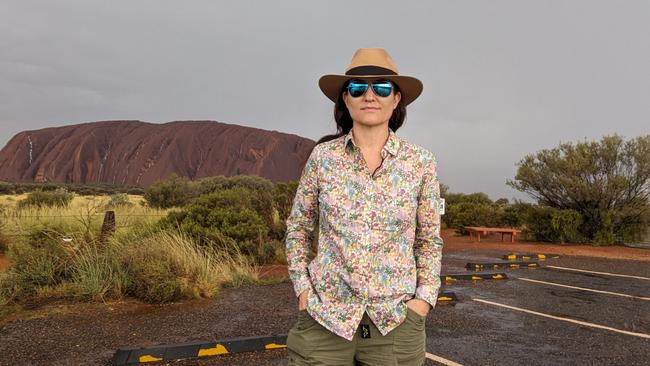
The two-year-old boy is near respiratory failure as we slip and slide across the desert rocks in the old troop carrier which functions as a basic ambulance. His tummy pumps in and out trying to suck air into his infected lungs. The strain makes the soft tissues in his neck cave in with each gasp. The man driving is the little boy’s grandaddy. A white-haired desert man employed by the clinic to pick up and drop off patients from their broken-down homes and – in an emergency – to drive the treacherous two hours into the nearest small town. Otherwise, he stays well away from town. Just this morning he was talking about the crisis of drug and alcohol fuelled violence in regional centres. “Too much fighting, too much grog and drugs. I get upset inside,” he said, hitting his chest then letting his hands fall in despair.
There should have been three ambulances at this remote clinic but two have been stolen and burned. The teenagers responsible are home-less, help-less and hope-less, and have drifted into violent gangs. Replacement vehicles are always given the go-ahead and new ones will turn up. But in-between times we are stuck.
The little boy’s mother lies on the stretcher, clutching him to her chest. Usually there would be a solo nurse escort, but when we saw him this morning in the clinic, head lolling to one side, lungs about to give up, sweaty and barely responsive, we knew it would need more than one person if worse came to worst.
“Can I get clothes? Our things? Tell family?” his mother asked, knowing that once in hospital they would be in a terrifying space. No phone charger. No connection to familiar voices or faces. Having to ask for underwear and a clean top from the “rag bag” of second-hand gear. English is just one of her three languages and she speaks it shyly at the best of times – let alone when being barked at by a fatigued doctor in town.
“No time to get anything. We scoop and run. We go now.” I’m not usually the sort of doctor to give orders. But something takes over when there’s a life at stake.
How did I get here? Barely past intern year, I discovered Icouldn’t cope with the stifling robotic machinery of life in a tertiary hospital, and took a job in Coober Pedy where gnarled old nurses taught me to suture wounds caused by star-pickets and deliver breech babies to mothers who walked in from the desert. There are better doctors than me out here. And people who have spent longer in the remote medical world. It’s the nurses who are the backbone of remote clinics and often work with little sleep, poor pay and minimal recognition for their skill set, which includes suturing gaping lacerations from crocodile bites (or machete blows), checking the mental health of teenage mums and resuscitating youngish adults from their fourth heart attack. Doctors are not peripheral, but what you need out here are not OCD consultants who can’t function without machines that go ping.
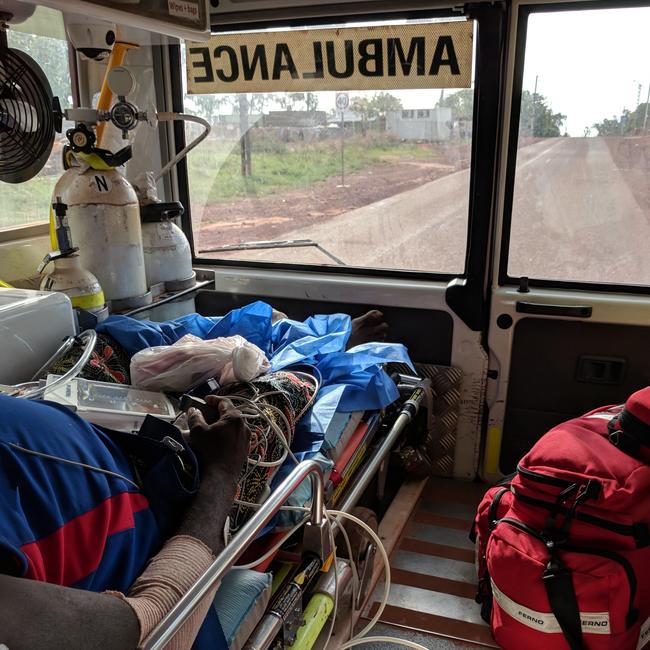
These bush clinics range from two to nine hours’ drive from small, isolated towns and regional centres - places like Maningrida and Lajamanu. And specks of islands off the coast. These are not the popular holiday towns and wine regions where doctors sip lattes and chardonnay on the weekends and discuss “rural medicine”. You know you’re remote when you can tell the difference between the home-brand and Devondale powdered milk, and experience a surge of elation when the 500g tin of International Roast appears on the shelf near the severed kangaroo tails.
They say it’s only “mercenaries, missionaries and misfits/maniacs” who work this far out of town. But many missionaries are highly respected by the locals, and I’ve met plenty of other Ms: the magnificent, motivated and modest nurses, doctors, health care workers and cleaners who dedicate their lives to saving hearts from failing, kidneys from dialysis and feet from amputation. Still, there are enough misfits and maniacs to dismantle the sanest person. A lot of them work in the health clinics. Just as many in the police and schools.
For the sake of “nine to five” work hours anda job close to home, I have previously tried to survive in regional general practice in smaller urban centres, but never lasted long. I work out here because I can’t face the “six-minute medicine” and entitled “worried well” of the city and the loneliness of suburban general practice. In city practices it is not uncommon for GPs never to see their colleagues – working in isolation from nurses who do their thing and receptionists who stay in their fishbowls.
I was flying in a nine-seat Cessna Conquest last year watching a 30-week pregnant colleague vomiting up her guts into a paper bag. It was the wet season and we’d struck a turbulent patch on the way to a string of remote islands where doctors would be dropped off for the day. Water bottles and handbags were going everywhere. One moment my bum was off my seat and another I was being thrown against the wall. Then it finished. Once I’d helped my colleague clean the vomit off her dress, pick it out of her hair and pull it off her stethoscope, I asked why she did this. She replied that it was worth not having to spend a minute in regular general practice. She was not a lunatic. She was one of the best and most sane doctors I know. It says a lot for the profession of general practice that every one of the medics on that plane murmured in agreement at her words.
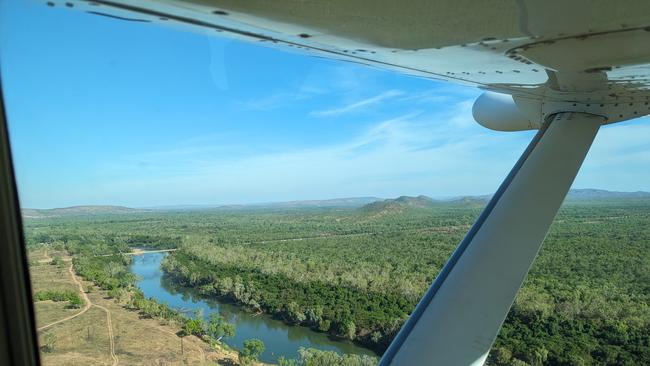
In the bush it’s all hands on deck. There are no appointments. Families crowd into the dusty waiting areas; children play and mangy half-starved dogs limp in and out. There’s nothing and no one we can manage to keep out. There are the rats, which are rarely seen but leave a God-awful stench; biting flies; centipedes and the occasional cachectic horse. My favourite was a python in the toilet. No one bothered it, and it bothered no one. That clinic did not have many rats. Or cats.
Sometimes there are less friendly types who try to get in. Nearly every clinic I’ve been to has been attacked with crowbars or rammed with stolen 4x4s by people adrift in a wilderness. Their lives have driven them to soothe distressed neurons by petrol and solvent sniffing. People demanding money or drugs. Or wanting access to an injured female patient so they can beat her up (again). Or violent offenders who have become psychotic (again) since release from prison. Every remote doctor or nurse knows someone who has been threatened, if not assaulted. And many of us fall asleep at nights thinking of Gayle Woodford. Raped and murdered on the APY Lands by a man who had sexually assaulted other nurses before her.
I don’t tell my husband, back home in Adelaide, about the threats, the dangers and the break-ins when police are unable to help or are injured themselves. Or our vehicles that are hijacked by drunk and drugged teenagers who throw bicycles under the chassis, smash the windows with bricks and leave us in the desert.
When I drive on these roads alone, I wear a whistle around my neck, a Leatherman on one hip and an EPIRB emergency location beacon on the other. As if these trinkets might save me. I find it hard to put them down when I come back home. Hard to remember that these odd things are amulets of my bush life. Harder still to explain them to airport security.
My Aboriginal colleagues and friends havetaught me that the most important aspect of life is not work, money or reputation. It is relationships. And my greatest treasure and comfort in life is my husband Noel. He loves the communities as I do; he spends hours researching anthropological texts about the places I go and prays for my safety when I am away.
The locals are fearful too. Of fights between gangs who shoot with crossbows and attack with axes. It’s sad, as this is usually a small number of people that the police have no ability to control and are influenced heavily by drugs, solvents, Facebook, Instagram and TikTok.
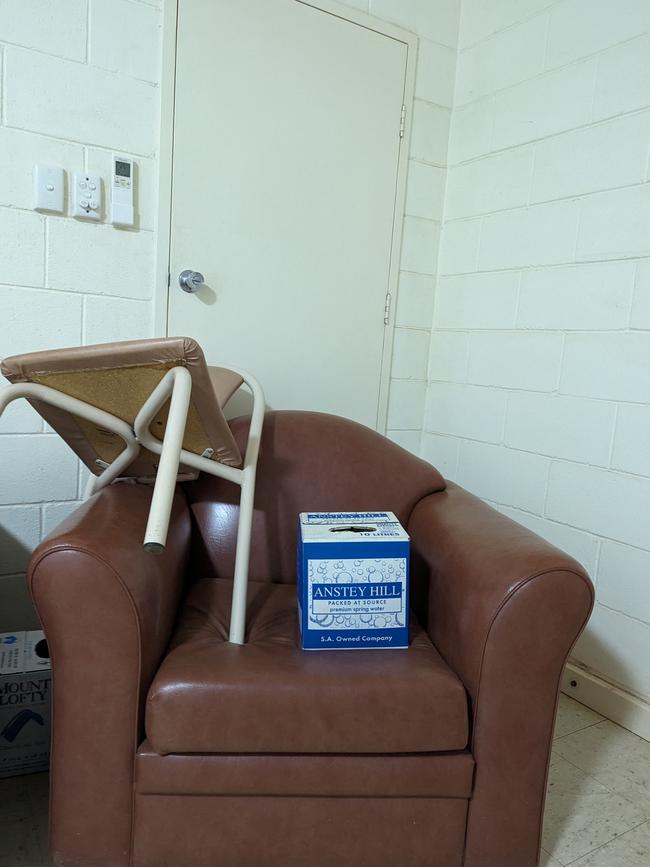

Most of the community, although often torn by domestic violence, are caught in the middle.
In the daytime, old women paint at the art centres or chatter under the shade of the shop veranda where packs of dogs scratch themselves and snap at each other. At night the women set up barricades using solo bins so that they’ll have some warning when stolen cars race down their streets endangering children and smashing through walls. They ask painfully, “What’s become of us? What’s become of our sons and daughters?” When they see their communities and the violence exposed on TV and YouTube, some get angry, some weep and some withdraw. Some of the best and most decent people I have ever met are Aboriginal and Torres Strait women and men. Because of cultural obligations they are effectively on call 24/7, and often burn out.
One old woman used to tell me stories about her totem and family lands. One day we sat on the rocks by a river while kids scurried around, slick with water and salted with sand. She took my hand as we talked and said, “All these problems. I don’t want to blame. No! I want talking. No blame. You talking to me. Me talking to you. Us sharing. Hearing. You know? I say to my family, ‘Get rid of the anger. It’s eating you up. Gobbling you up’. I tell them kids, ‘You look forward. You responsible for your life! No smoking! No drugs! You go to school and make your grandma proud.’ True. Yuwalk.”
Most clinics are plastered with graffiti. One clinic by a river where I was working sustained ongoing graffiti attacks. I became worried about what the new nurses might think of being greeted by a massive, spray-painted penis hanging down on the window. The manager refused to pay for any more cleaning bills and decided the community could put up with what their kids defaced. Considering the value of art on communities, I was disappointed. It was more of a cartoon creature with big round eyes touching each other and a long dangly nose. Every week on my one FIFO clinic day I invented new ways of disguising the thing. But cardboard and sticky tape just fell off with the humidity and the educational posters on “ear health” and “the seven signs of syphilis” I tried to glue over the top peeled away too. Eventually I found an orange “duck bill” Covid mask and blew up a blue glove as a balloon. I taped the duck bill mask just under the eyes and put the balloon as a rooster-like hairpiece on top. The effect was rather pleasing. I thought it had been my own private joke until I turned around and found the clinic manager and all the staff silently watching.

I am planning how I will handle things if the ambulance rolls over. I thank God for the EPIRB on my belt because in the rush we’ve forgotten the satellite phone. I wonder how I would handle crawling out of an upside-down vehicle and having to extract others. Are my boots strong enough to kick out a window like a nurse had to do last month? The dust gets worse as we come to a blood-red sand track littered with sharp rocks and bull dust holes. I wonder if I’ll be as brave as I hope when I’ve got a smashed leg or collarbone. I can see the strain in the face of the driver. I turn in my seat to see what’s happening behind. I yell above the noise of the engine, “How’s his breathing? Is he conscious? Does he have a pulse?” I see the boy’s little head flopping to one side like a dead bird. Light brown curls plastered to his sweaty face.
The kids out here are hardy as spinifex. Most of them have scabies, lice, ringworm, school sores, pus-filled ears and boils. Adults come in with diabetic foot infections and an upfront question for all is, “Any creepy crawlies?” This means, “Any maggots?” It’s not an insult. It’s not considered unclean or gross. It makes no one shudder. It’s a fact of life.
By way of contrast, I remember a brief stint I did in the city when a woman in designer gym wear brought in her 14-year-old daughter about an itchy scalp. The girl took off her school hat with the silver crest on the front and smart blue band. I peered under the golden braids and asked if anyone in the family had lice, scabies or school sores. I never saw either of them again and I was told they had changed to another medical practice. The clinic manager suggested I don’t mention those words in public. Twenty years ago, as a trainee, my supervisor told me that general practice was 80 per cent boredom and 20 per cent flying by the seat of your pants. Now it’s perhaps 98 per cent to 2 per cent. GPs are risk-averse and burdened by bureaucracy, and have been reduced to script-writing and referral machines. Out here there’s rarely any boredom. Clinic rooms belong to anyone old enough to open cupboards, pull out computer cables and play catch with the two-thousand-dollar otoscope.
Last week it took four staff to keep two children from trashing everything. The poor overwhelmed mother begged for help with her silent eyes. Paediatricians struggle to respond, thanks to endless screen time that demolishes any vestige of a circadian rhythm and local shops full of white bread and Coca-Cola. Is that a medical condition or a sugar-high little addict crashing through life like Cyclone Tracy?
Aboriginal health practitioners (AHPs) aremedical and cultural specialists who soften the cultural divide. They do what no other person can. They are usually able to speak “in language” and easily assess families of six or more at a time. Hunting out perforated eardrums, hidden skin sores, untreated rheumatic heart disease and administering medications. And they seamlessly keep track of who is who when anyone else would have lost the plot at the five-minute mark. I walk (or run) around the clinic with them, listening to hearts; double checking ears for holes, gunk and insects; eyes for trachoma. Boils are lanced multiple times a day; we dispense bucket-loads of “itchy cream” and soap for scabies and ringworm. There’s laughter, tears and deep conversations about how to treat and how to explain medical conditions when English is just one of many languages. Many times, my role is to stand in the corner while Aboriginal pastors pray in language and sacred healers perform ancient rituals with their breath and hands over a sick relative.

Some days there are wounds caused by domestic violence that we suture, or send away for complex plastic and orthopaedic surgery so that shattered bone can be repaired. Patching up hearts and minds damaged by the trauma is more difficult. Especially when children are involved. In one island community, the women raised money for a domestic violence shelter but the men said no. On one occasion there was no safe place for a battered 19-year-old woman and her baby to hide, so we sheltered them in the (full) morgue until police came.
At a critical moment in the ambulance, all of our electrics die on the patient monitoring equipment. Treat the patient and not the machine is the mantra, but trying to get a sense of the child’s breathing is hard when we’re bouncing around in a vehicle. In the distance I see blooms of dust – the high-tech retrieval ambulance coming to meet us. I breathe out and close my eyes. Thank God. But there’s a grader and a massive truck up ahead, taking up the whole track, crawling along at the pace of a skink. We put on our lights and sirens. Foolish in the thick dust, but miraculously they have seen us and pull over. One of them must have radioed ahead because soon we pass a line of vehicles, all waving and wishing us luck. I am nearly in tears with the stress and with the agonising beauty of this grandfather on a mercy mission for his family. Here and now, the sense of burnout that has been bubbling under the surface since Covid vanishes and all I know is that I want to be the best doctor I can. I know none of these remote places I return to is my home. Some time ago I was kept alive by a remote community after a truck in which I was a passenger broke down. Their tiny store a million miles from nowhere had run out of food so we were reliant on them to hunt and fish for us. Night after night we sat by the riverbed and ate damper, bush turkey, kangaroo tail and sometimes snake until a supply vehicle eventually arrived. Yet the people who have lived on the land for endless generations are not my family. I’ve been adopted and given skin names and have “cousins” and “sisters” out here. But I don’t presume to belong.
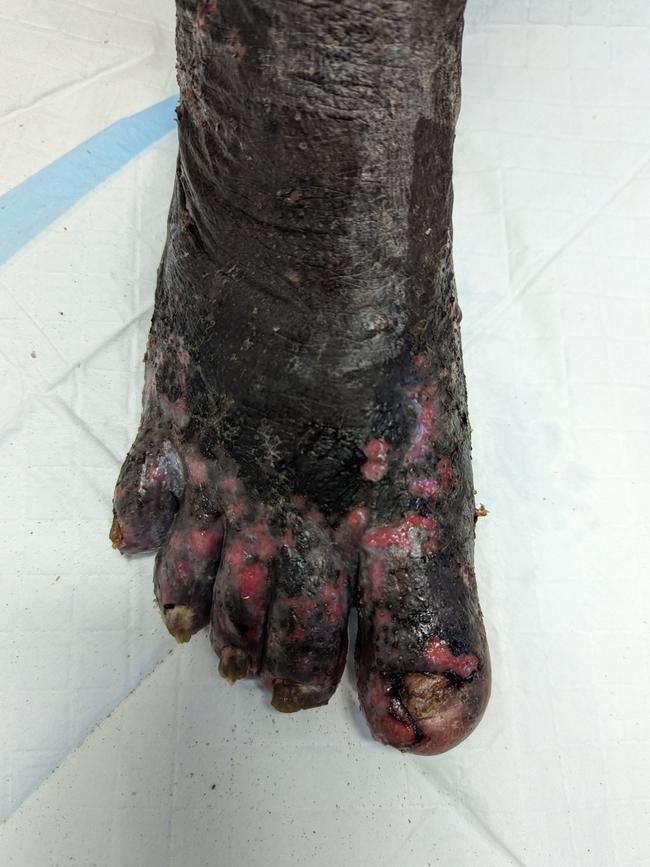

Some non-Indigenous people come to these places from their own broken families and urban communities, trying to shed their past in search for meaning and psycho-social healing. They have a romanticised ideal of community life as full of rituals and customs they can adopt as their own. It’s a fairytale ideal. One old Aboriginal woman told me that the word they used for whitefellas who come and go is, “leaf litter – because you blow in and then blow away again”. I don’t think it was an insult. Just a comment on her reality. Personally, I can only survive the dysfunction by coming and going. By casual contract work that I can control, so I can leave when it all gets too heartbreaking or too dangerous. Even so, I am aware that there is a trauma from this work that has the potential to erode my body and mind. Sometimes I think of that erosion as a precious wound which comes as a privilege of living and working in this context.
It’s 43 degrees outside. I wonder whether to ask the driver to stop. Although the nurse practitioner I have with me, Caitlin, is as skilled as a GP, we both know that a resuscitation on the side of the road with no equipment, no satellite phone and no shade would fail before it had begun. She has her hand on the child’s belly and chest, and indicates to me he is breathing. Miraculously, when I next turn around, I can see that he has improved slightly. His pulse is good and not slowing with exhaustion. Any time now we should see a proper ambulance coming to meet us. One with a specialist retrieval doctor and machines that go ping. Time stretches. There’s a chance that with all the dust, we’ve missed them. We have no radio. I have sweat and grit in my eyes and need to pee. It’s becoming likely, I think, that they have passed us or taken a wrong detour.
Sometimes people ask me where home is. Home is with my husband and two pampered ragdoll cats in a nice unit with bookshelves and air-conditioning. And a perpetually overstuffed shopping centre ten minutes up the road. But the longer I do this work, the more it gets into my soul. The less I am attached to home as a place of comfort. I know because 20 years ago I used to talk about the adventures. The people. The crises. I used to like the idea of stepping off the plane and changing into high heels and a floral dress, putting on make-up and having dinner at an expensive restaurant. Now I wonder about the choices we make and the things we value in mainstream society. At dinner parties I don’t want to talk about last week sharing damper, yarning by the river with the women, or the terrible illnesses and injuries. I keep them tucked away in my heart.
Every day I try to understand the matrix of problems that leads to such desperately sick kids and adults. I understand that statistically there have been improvements in morbidity and mortality in remote communities, but over the past 15 or so years my impression is that almost nothing has changed. We still see massive amounts of crusted and infected scabies, deaths from rheumatic heart disease, severe melioidosis, children dying from staphylococcal sepsis, domestic violence and child abuse. People say it must be great to make a difference. Yes, there are many times when we save lives, but that person who is saved comes back to the same degree of vulnerability, to future sickness, and probably an early death.
Is the problem a germ called Group A strep, which leads to crater-like skin sores, ruined hearts and damaged kidneys? A germ only treatable by a penicillin as thick as toothpaste, injected through a 5cm-long, wide-bore needle, into the backside. Adult patients are brought to their knees by the needle. Children held down by parents and staff. Screams echoing from one end of the clinic to another. A male nurse said recently, “I feel like such a monster every time I do that.” I agree, and my heart catches when I hear that scream. And we wonder why no one comes to the clinic until it’s too late…
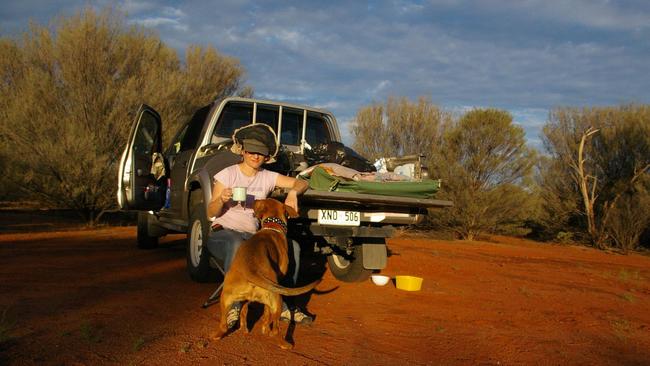
Is the problem hygiene? Every day we dispense bucket-loads of soaps, antiseptic surgical skin scrubs, shampoos and toothpaste. Every week we spend hours packaging up personalised medications couriered in from regional pharmacies. And the next week we throw them out because nobody turns up to collect them.
Is the problem poverty? There’s plenty of money about. But poverty is more than a deficit of money. There is a homeostasis that feeds sickness. A homeostasis that seems to have developed because of multiple poverties. One local said recently, “I get cash on pay-day but now a packet of smokes costs over $70, no one has anything for food.”
Price-hikes in stores, as well as gambling and alcohol addiction, cause pockets and purses to haemorrhage Centrelink and royalty money. Then there’s the complex cultural power relationships which mean that some people are forced to give up money, clothing, medications, cars (and sexual favours if you’re a female over the age of 11) to others who take all they can get. Combined with a poverty of education, a poverty of routine and a poverty of meaningful work. But not necessarily poverty of hope, nor of courage, nor resilience.
I shake my head at what must be a mirage: the flashing red and blue lights of the other ambulance. We’ve driven most of the way ourselves but are beyond grateful they’ve come. I carry the little boy in my arms. He has just enough energy to cling to me, his brown fists tangled in my hair and his head nestled against my neck. The specialist retrieval doctor and paramedics take over and radio their ETA to the country hospital. The little boy is safe. His mother grasps my hand and looks unsure. She and her boy are going to an unfamiliar country.
Back in the ambulance, the grandfather’s shoulders relax, and we follow the other vehicle at a slow pace, no words passing between us. All thinking what we could have done differently. What we should have done better, and the trauma that might have been. At the servo we fill up, grab some bottles of water, then head straight back out bush.
Consent has been gained to share conversations and stories. All the photographs have been displayed with consent and if requested, adjusted to remove identifying features.


